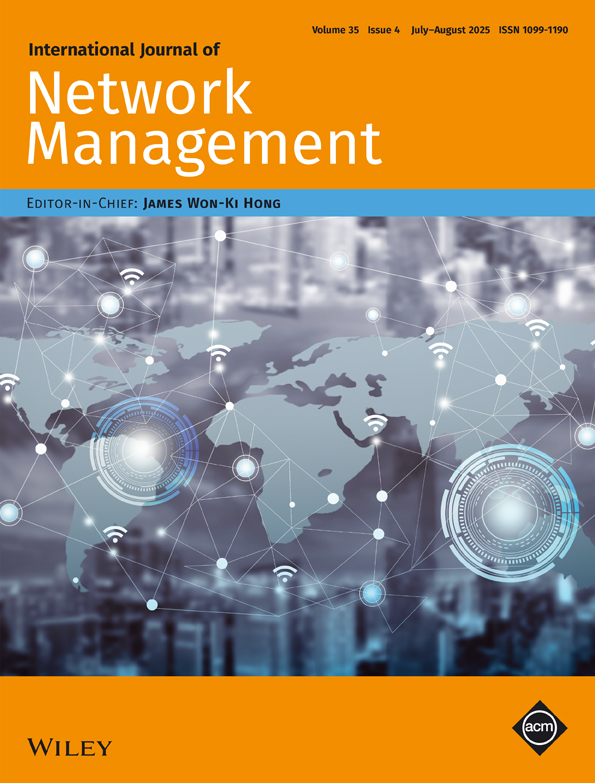Editorial for the Special Issue on Research Trends in Network Operations and Management With Selected Papers From the 42nd Brazilian Symposium on Computer Networks and Distributed Systems
The Brazilian Symposium on Computer Network and Distributed Systems (SBRC) is an annual event held by the Brazilian Computer Society (SBC) and the Computer Network Laboratory (LARC). Over the course of more than four decades, SBRC has established itself as the most important Brazilian scientific event in computer networks and distributed systems, reaching international coverage with the presence of researchers, technicians and scientists from Latin America and the world. The 42nd edition of the symposium was held from May 20–24, 2024 in the city of Niterói, at the Fluminense Federal University.
In the first contribution, entitled “MTS-PolKA: Weighted Multipath Traffic Splitting With Source Routing for Elephant and Mice Flows,” dos Santos et al. present MTS-PolKA, a novel traffic engineering mechanism for datacenter networks that enhances packet-level traffic splitting across multiple paths. Unlike traditional methods like ECMP and WCMP, MTS-PolKA dynamically adjusts traffic division using source-routing labels embedded in packet headers—without requiring reconfiguration of network switches. Implemented in P4 and leveraging the Residue Number System (RNS), MTS-PolKA demonstrates improved flow stability, agility, and efficient multipath utilization through experiments in Mininet.
In the second paper, entitled “Performance and Resilience Impact of Microservice Granularity: An Empirical Evaluation using Service Weaver and Amazon EKS,” Medeiros Rêgo et al. study how service granularity affects performance and resilience in cloud-based microservice applications. Using the Service Weaver framework and deploying the Online Boutique app on Amazon EKS, the study reveals that finer granularity improves scalability but increases communication overhead, while cloud-native resilience features mitigate failures at the cost of performance, especially in tightly coupled configurations. Our findings emphasize the need to strike a careful balance between service granularity, performance, and resilience to build robust and efficient cloud-based microservice applications.
In the third contribution, entitled “Beyond Size: Investigating the Impact of Scaled-Down Network Telescopes on Threat Detection,” Camargo et al. examine how reducing IPv4 address space affects the effectiveness of network telescopes used in cyber threat intelligence. As IPv4 becomes scarcer, organizations face pressure to repurpose addresses, potentially weakening threat detection. By analyzing two telescopes, the research shows that even with a 50% reduction in space, it is still possible to detect around 80% of unique attack sources, and that address allocation patterns have minimal impact on detection accuracy.
In the fourth contribution, entitled “An Adaptive Routing Architecture for IoT Multipath Video Transmission,” Bhering et al. present a dynamic wireless multipath routing architecture designed to improve video application performance in multihop IoT networks. By adapting to changes in network topology and video traffic characteristics, the proposed approach enhances the end-user's quality of experience. The paper also includes an overview of wireless video applications in IoT and a taxonomy of current multipath route selection mechanisms.
In the fifth paper, entitled “QuantumNetSec: Quantum Machine Learning for Network Security,” Abreu et al. introduce a novel Intrusion Detection System (IDS) that combines quantum and classical computing techniques. QuantumNetSec employs Quantum Machine Learning (QML) personalized methodologies to analyze network patterns and detect malicious activities. The paper highlights the significant potential of quantum-enhanced cybersecurity solutions, showcasing QuantumNetSec's ability to accurately detect a wide range of cyber threats, paving the way for more resilient and effective intrusion detection systems in the age of quantum utility.
The guest editors thank the Editor-in-Chief of the International Journal of Network Management (IJNM) for the opportunity of organizing this special issue as well as the anonymous reviewers who provided invaluable help in evaluating the submitted papers. Finally, we hope all interested readers enjoy reading the selected papers and find them useful for their own research.
Conflicts of Interest
The authors declare no conflicts of interest.
Open Research
Data Availability Statement
Data sharing is not applicable to this article as no datasets were generated or analyzed during the current study.




